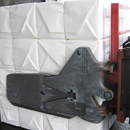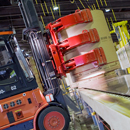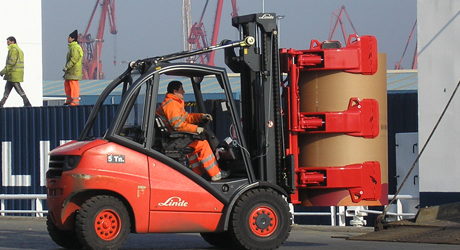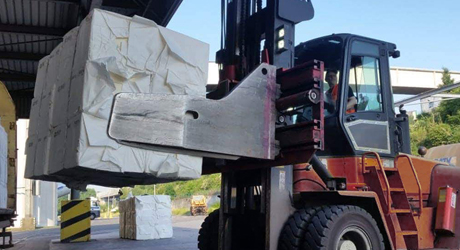 FIND YOUR PORT TERMINAL SOLUTIONS
FIND YOUR PORT TERMINAL SOLUTIONS



Forest products, and paper rolls in particular, are one of the main cargo groups requiring specialized lift truck attachments.
Paper rolls are heavy, prone to damage, difficult to handle and have a considerable unit value.
The transport chain of the rolls is often long, requiring as many as 16 handling stages before the paper roll is in the printing machine.
This makes it essential to use well-chosen, well-maintained equipment.
All paper rolls are not equal - neither are the tools to handle them
Paper rolls are manufactured in a great variety of diameters, widths and weights. Varying printing processes and paper grades set different requirements to the physical dimensions of the paper rolls.
There are different ways to handle the same paper rolls
The demands of the logistic chain from paper mill to the end user define the most suitable equipment.
All links in the logistic chain should use the most suitable and most profitable tools. Highvolume stevedoring operations require different lift trucks and attachments than a printer’s warehouse.
All paper rolls do not tolerate the same handling
Different paper grades tolerate different amounts of clamping force. Overclamping a paper roll causes excessive out-of-roundness, and sometimes even core damage. Clamping with insufficient clamping force may allow the paper roll to slide, drop or telescope from the clamp’s grip.
Softer paper grades deform locally under the clamp pads. Harder paper rolls tolerate more clamping force until they get out-of-round. Increasing the recycled fibre content in the paper roll may make it more prone to out-of-roundness damage. Differences in winding tightness also change the paper roll’s behaviour under clamping.
Every paper roll can be destroyed by clamping it too hard. Every paper roll can be destroyed by not clamping it enough.
All paper rolls do not have the same wrapping
A wrapper protects the valuable paper roll from damage, dirt and moisture. It also prevents the paper from unwinding from the roll.
Paper rolls are delivered with several wrapper types, and even sometimes without any wrapping.
The most common wrappers are made of kraft or kraftliner paper. Other paper types as well as plastic wrappers are also used.
A typical wrapper consists of several paper layers and end plates, all wound around the paper roll and glued together.
During the clamp handling the paper rolls are carried with the friction force generated between the wrapper and clamp pads.
The handling properties of the wrapper are of vital importance.

Pulp bale clamps are normally designed to carry 1, 2, 3, 4, 6 or 8 pulp bale units at a time.
Sometimes the same clamps are also used to handle single bales and non-unitized bale sets.
When selecting the attachment to handle pulp bales, pay special attention to how, and with which bale unit combinations the handling will happen. Notice that the clamp may be required to carry units from all directions. The capacity requirements set for the lift truck and clamp attachment may change substantially when the handling direction is changed.
Depending on the transport system requirements, the same bale units can be transported using different attachment models. For example, the same 4 unit load can be transported all 4 abreast, or as 2+2 lengthwise combination, or as 2 + 2 on top of each other. The requirements set for the attachments in each case are completely different.